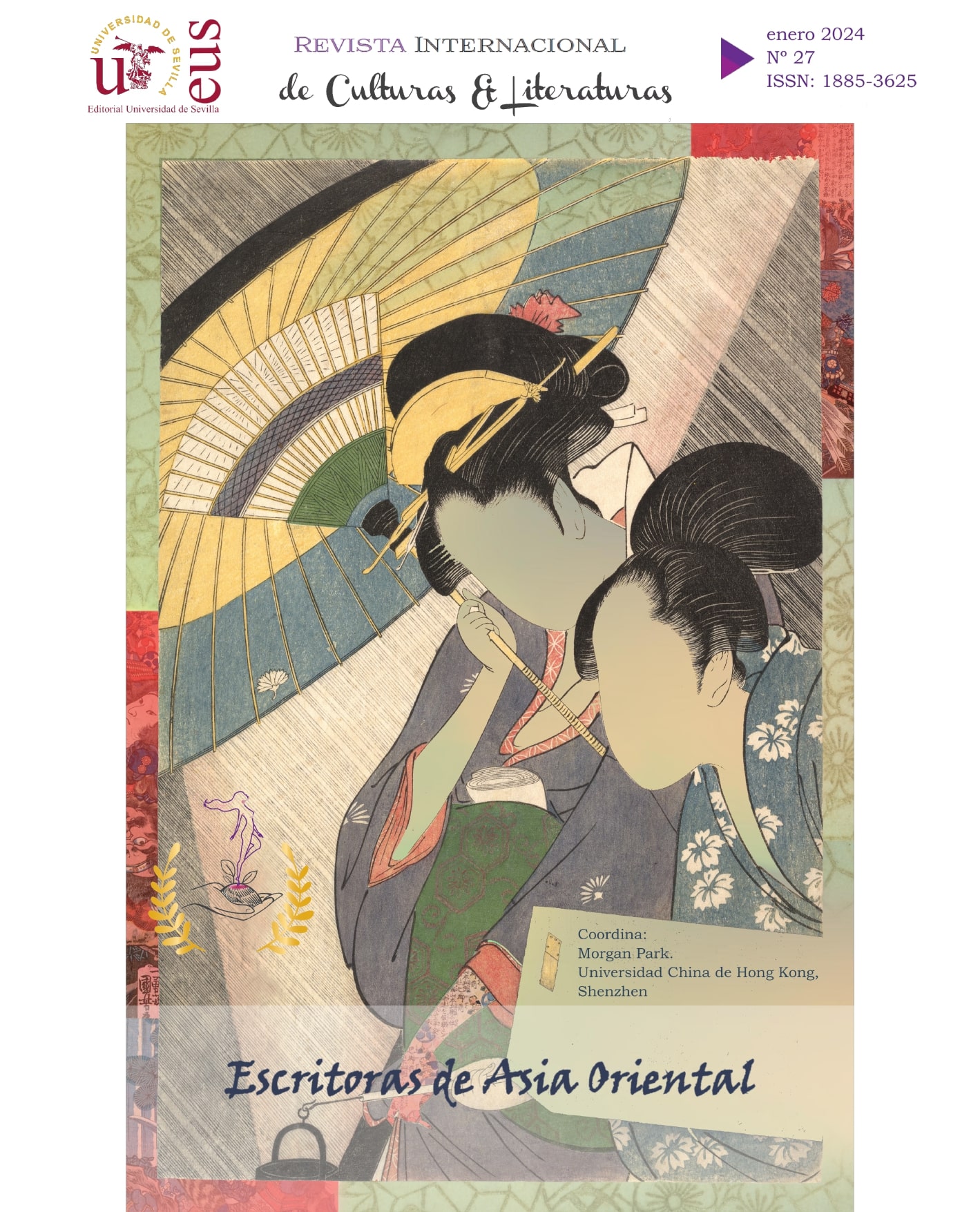UNO CHIYO AND THE I NOVEL: THE GENRE KIKGAKI AS AN INNOVATION
DOI:
https://doi.org/10.12795/RICL2024.i27.13Keywords:
Uno Chiyo, I novel, kikigaki, innovationAbstract
Uno Chiyo (1897-1996) made her debut in the 1920’s, when women writers started to enjoy more freedom and recognition than her predecessors from the Meiji Era. Back then the genre shishōsetsu or I novel, the result of the search for the truth by Japanese authors who, influenced by naturalism, dissected their private lives in detail, was at its peak. Many of Uno’s works were considered as I novel and the author became very popular airing her romantic relationships, hardly in keeping with moral values at that time. She also became renowned for writing about illicit romances.
Furthermore, the novels in which the author reproduces what the narrator told her, with which she revived the genre kikigaki, are very remarkable. Uno Chiyo surprised readers and critics with novels in which she adopted male voices and told their experiences as well as their reflections and most intimate feelings, describing them psychologically in depth.
In this article, we will analyze Uno Chiyo’s kikigaki novels (Confessions of love or Ohan, among others) from the perspective of the I novel, to highlight the contribution of this author to the genre and to the literature by women writers. Her kikigaki novels were innovative in many aspects. On the one hand, she developed a narrative technique that added authenticity to the story, what she also achieved with the psychological descriptions of the characters. On the other hand, reproducing the words of a male character was a way to defy the taboo that women writers had to restrict themselves to feminine topics.
Downloads
References
ARAI, Maria (2008). “Uno Chiyo Iro zange ron: Katari sutairu no imi (Sobre Iro zangue de Uno Chiyo: el significado del estilo narrativo”. Koku Bungaku, 92, pp. 235-249.
COPELAND, L. Rebecca (1992). The Sound of the Wind. Life and works of Uno Chiyo. Honolulu: University of Hawaii Press.
ENOMOTO, Takashi (1980). “Shizenshugi sakka (Escritores naturalistas)”. En T. Kōno, Y. Miyoshi, T. Takemori y T. Hiraoka (eds.), Taishō no Bungaku (pp. 140-147). Tokio: Yuhikaku Sensho.
FAWLER, Edward (1988). The Rhetoric of Confession: Shisosetsu in Early Twentieth-Century Japanese Fiction. Berkeley: University of California Press.
FURUBAYASHI, Takashi (1972). “Shōwa nijūnendai no bungaku (Literatura de la década 20 de Shōwa)”. En T. Kōno, Y. Miyoshi, T. Takemori y T. Hiraoka (eds.), Shōwa no Bungaku (pp. 227-236). Tokio: Yuhikaku Sensho.
HIRABAYASHI, Taiko (2000). “Uno Chiyo ron (Sobre Uno Chiyo)”. En M. Kikuchi (ed.), Hayashi Fumiko, Uno Chiyo, Kōda Aya Shū (pp. 450-452). Tokio: Chikuma Shōbo. (Texto escrito en 1969).
HIJIYA-KIRSCHNEREIT, Irmela (1996). Rituals of Self-Revelation: Shishōsetsu as Literary Genre and Socio-Cultural Phenomenon. Cambridge: Harvard University Press.
MIZUTA LIPPIT, Noriko e IRIYE SELDEN, Kyoko (1991). Japanese Women Writers. Twentieth Century Short Fiction. New York: M. E. Sharpe.
SAEKI, Shōichi (1992). “Uno Chiyo”. En S. Odagiri (ed.), Nihon Kindai Bungaku Daijiten (pp. 213-214). Tokio: Kōdansha.
SAKAI, Kazuya (1968). Japón: hacia una nueva literatura. México D. F.: El Colegio de México. Centro de Estudios Orientales.
SHIGESATO, Tetsuya y SUKEGAWA, Kōichirō (2019). Heisei no Bungaku towa nanndatta no ka (¿Cómo fue la literatura de Heisei?). Kamakura: Harukaze Shōbo.
TAKEMORI, Tenyū (1972). “Meiji, Taishō bungaku no meimyaku (Vida de la literatura de Meiji y Taishō)”. En T. Kōno, Y. Miyoshi, T. Takemori y T. Hiraoka (eds.), Shōwa no Bungaku (pp. 98-105). Tokio: Yuhikaku Sensho.
UNO, Chiyo (2019). Confesiones de amor. Barcelona: Alpha Decay. (Traducción del japonés de Junichi Matsuura y Lourdes Porta).
UNO, Chiyo (2000). “Iro zange”. En M. Kikuchi (ed.), Hayashi Fumiko, Uno Chiyo, Kōda Aya Shū (pp. 183-262). Tokio: Chikuma Shōbo.
UNO, Chiyo (1997). “Ohan”. En T. Kadokawa (ed.), Uno Chiyo / Setouchi Hakuchō (pp. 7-79). Tokio: Kadokawa Shoten.
VALLES CALATRAVA, José, ÁLAMO FELICES, Francisco y CANTÓN RODRÍGUEZ, María Loreto. (2002). Diccionario de teoría de la narrativa. Salobreña (Granada): Alhulia.

